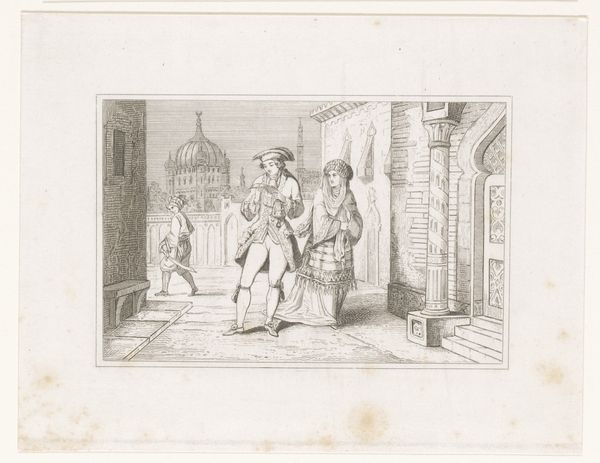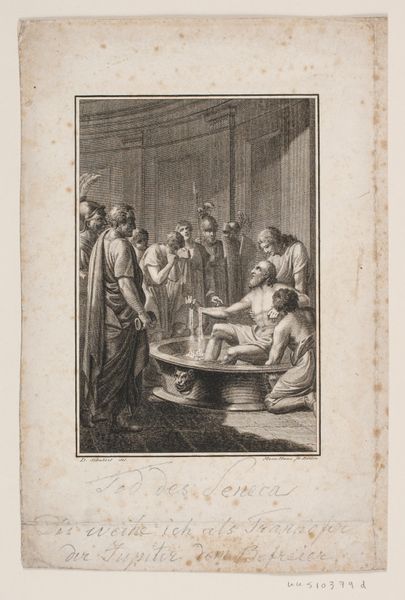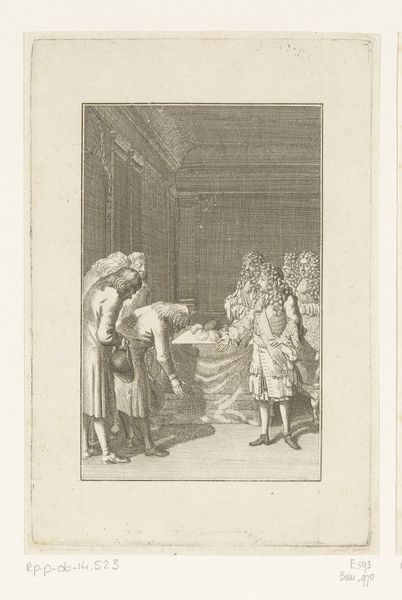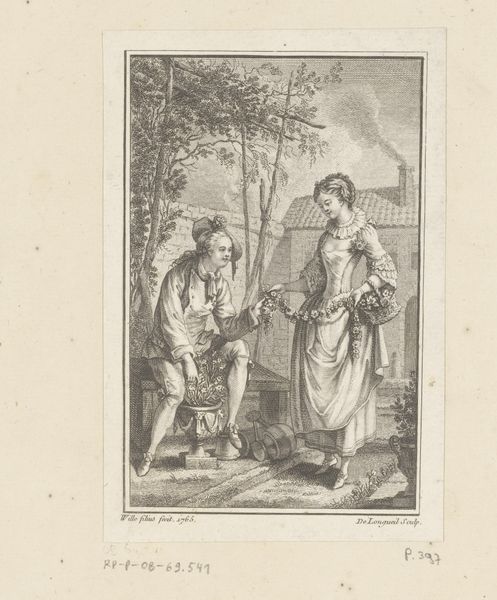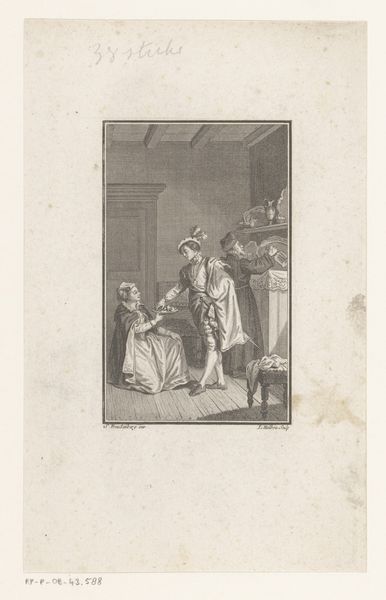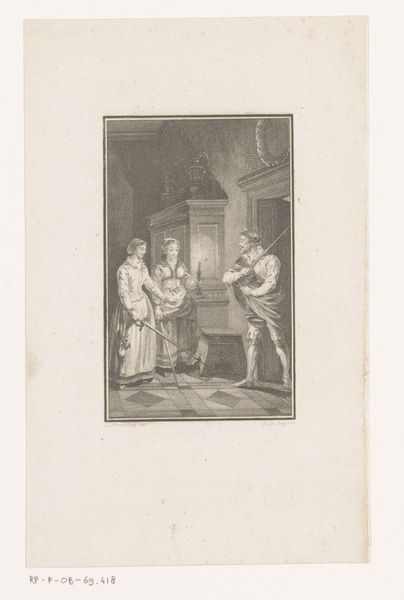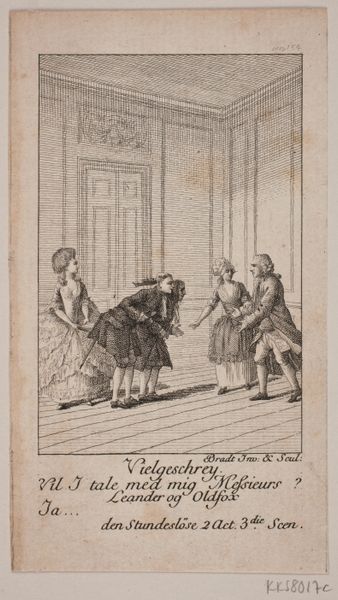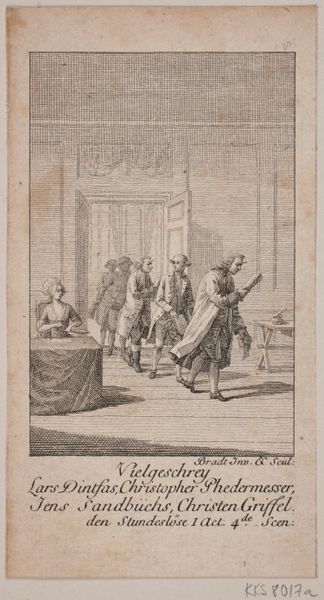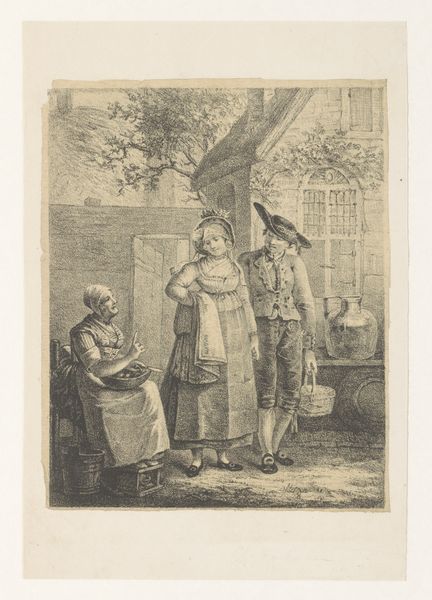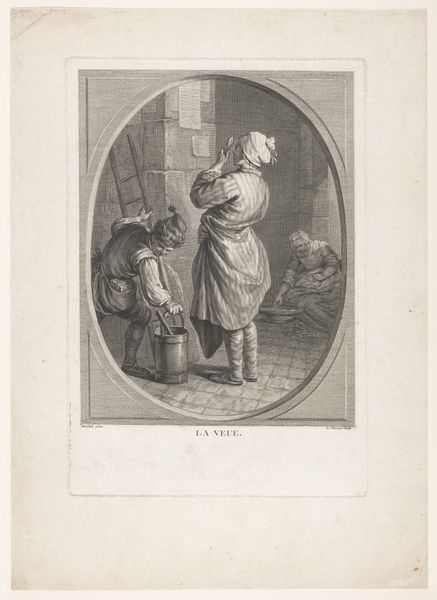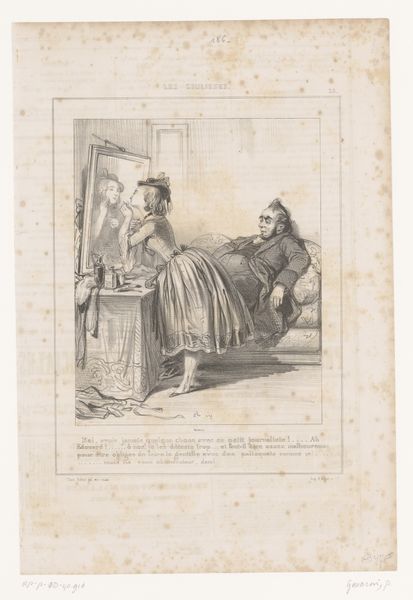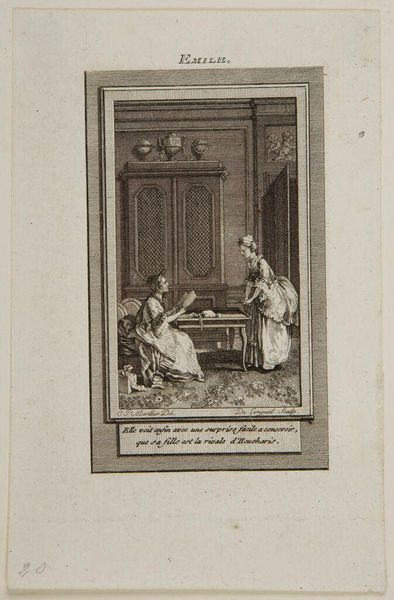
drawing, print, paper, ink, engraving
#
drawing
# print
#
landscape
#
figuration
#
paper
#
ink
#
orientalism
#
line
#
genre-painting
#
history-painting
#
engraving
#
realism
Dimensions: 141 mm (height) x 96 mm (width) (bladmaal)
Editor: So, this is "Illustration med kinesisk motiv" by Oluf Olufsen Bagge, created sometime between 1780 and 1836. It's a drawing and print using ink on paper, currently held at the Statens Museum for Kunst. I’m struck by the clarity of the lines, even with so much detail packed into the image. How would you interpret its formal qualities? Curator: Precisely. Let us consider first the compositional elements. Notice the careful arrangement of the figures in relation to the architectural backdrop. The figures and architecture are arranged within a strict binary: Western notions of classical compositions contrasting and mixing with forms inspired by East Asia. What do you observe about the artist's use of line? Editor: Well, the linework is very fine, creating texture and detail, but it also feels very controlled. There's a real precision in how the clothing, the buildings, and even the sky are rendered. Curator: Indeed. Observe how the line delineates form and defines space, particularly the textures of the garments. The contrasts serve not only to create visual interest, but also serve a structuring element of power. In structuralist terms, we can understand the medium itself, that is ink, is pressed into service to carry social and political messages concerning colonialism. Does the interplay between Western artistic style and what appears to be a Chinese subject matter change how you perceive this piece? Editor: Definitely! The tension between those elements makes it more complex. At first, it simply looked like a historical scene, but knowing that the style and subject matter come from different cultural backgrounds gives the image a new level of depth. Curator: Precisely, the tension arises as the lines themselves carry cultural and artistic assumptions. Bagge is thus implicated in colonial dynamics. Editor: It's fascinating how focusing on those elements brings out these complex ideas about cultural exchange and representation. Curator: Indeed, through this analysis we gained clarity of its composition and complexity by looking into its construction as form and idea, informing and reinforcing the other.
Comments
No comments
Be the first to comment and join the conversation on the ultimate creative platform.
